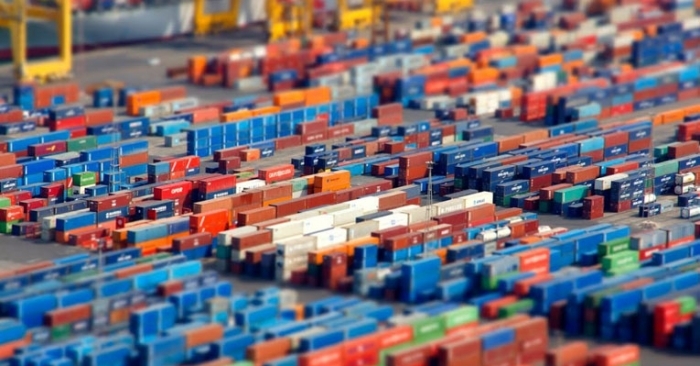How logistically competitive Indian exports are?
The logistics sector has a great role in the economic development of India, the country has the vision to be the manufacturing hub and a robust logistics sector can play the vital role to achieve this with other government initiatives such as “Make in India”.

The logistics sector has a great role in the economic development of India, the country has the vision to be the manufacturing hub and a robust logistics sector can play the vital role to achieve this with other government initiatives such as “Make in India”. The companies across the globe look for a unified production base and a market having a competitive logistics sector. Therefore, for India to achieve its dream of being a global manufacturing and export hub it has to bring down its logistics cost considerably.
Keval Shah of Afleo Consultants is explaining how logistically competitive Indian exports are in the international market and how the foreign trade policy has evolved to help Indian exporters.
Introduction
The key markets for Indian commodity exports are the USA (16 percent of its overall exports), UAE (9), China (5.1), Hong Kong (4.1), Singapore (3.2).
India’s main competitors are developing countries such as Vietnam, China, Bangladesh, Indonesia, Malaysia, Hong Kong, Brazil and developed countries such as the USA and Japan.
Let us now compare the logistics cost as a percentage of the GDP for all the above countries and see where India stands:
| Sr. No. | Country | Logistics cost as a % of GDP |
| 1 | India | 13-14% |
| 2 | China | 18% |
| 3 | Vietnam | 25% |
| 4 | UAE | 14% |
| 5. | Thailand | 19% |
| 6. | Malaysia | 13% |
| 7. | Japan | 11% |
| 8. | EU | 10% |
| 9. | Singapore | 8% |
| 10. | USA | 7.7% |
Therefore, it can be seen that the logistics cost of developed countries is much lower as compared to India.
How is foreign trade policy helping Indian exporters to be logistically competitive?
India is on a mission to bring down the logistics cost to 10 percent of the GDP. This is being done with the help of many schemes as well as policy changes.
1. Transport and Marketing Assistance Scheme (TMA)
The Government of India introduced the Transport and Marketing Assistance Scheme (TMA) for the specified agricultural products to give the financial assistance for the transportation and marketing of agricultural goods to boost the export of such commodities.
Objectives
- To cut down the transportation costs on the export of agricultural goods
- To make agricultural products competitive in the international market
TMA Scheme reimburses the certain part of freight paid on the export of agricultural products in cash through direct bank transfer.
The government also allocated ?1.7 lakh crore for transport infrastructure and promised to build 12 highways (6000 kilometres) by 2024 which shall benefit freight movement and transportation costs.
2. Proposed new RoDTEP Scheme
Fuel cost is the main reason to get worried about the logistics industry as it also increases transportation costs and makes Indian products uncompetitive in the global market. Now, the proposed new RoDTEP Scheme intends to reimburse the State VAT and Excise levied on the fuel used in the inbound and outbound transportation of an export shipment. (Inbound - raw materials coming to factory & outbound - transportation from factory to gateway port)
This scheme will come into effect from January 1, 2021, and it will considerably lower the logistics cost for Indian exporters.
The new RoDTEP scheme replaced the existing MEIS scheme which incentivized exporters due to infrastructural inefficiencies and associated high cost of exports in India.
3. Service Exports from India Scheme (SEIS)
This scheme offers incentives to logistics companies in India who are rendering services to foreign clients and earning in free foreign exchange. Incentives are in the range of 3-5 percent of the total net foreign exchange earned. In this way, the logistic companies can pass on the benefits to customers and bring down the overall logistics cost.
There are various other initiatives taken by the government considering the challenges the logistics sector is facing regularly.
4. Export Promotion Capital Goods Scheme (EPCG Scheme)
EPCG scheme covered under Chapter 5 of the FTP allows service providers in the logistics sector to import advanced equipment to improve the existing logistics level at zero percent import duty. This scheme can help reduce the logistics cost by transforming & upgrading the existing infrastructure and resources.
There are various other initiatives taken by the government considering the challenges the logistics sector is facing regularly.
5. Logistics Department
A logistics department was created on July 7, 2017, in the commerce department to coordinate the integrated development of the logistics sector.
The logistics department plays a vital role in the development of the logistics sector and has been given the following responsibilities by the government:-

6. Multi-Modal Logistics Parks Policy
Multi-Modal Logistics Parks Policy launched by the government of India to improve the logistics sector in India to promote the domestic and global business which has the following objectives -

7. National Logistics Policy
The finance minister of India Nirmala Sitharaman introduced National Logistics Policy and said about it that it will create a single-window e-logistics market and focus on the generation of employment, skills, and making MSMEs competitive.
- Geo Tagging of all warehouses
- Provision of viability gap funding
- To set up warehouses at block or taluka levels – Krishi trains, Krishi Udaan scheme for air transportation
- 100 lakh crore national infrastructure pipeline towards the creation of roads, railways lines, airports and ports.
8. Logistics Data Bank
It has provision to track the location of containers across the globe to check the delivery status, it helps to identify the challenges across rail containers movement and congestion at the port area.
LDB brings visibility and transparency in the logistics sector through the implementation of IoT (Internet of things), Big data, cloud-based visualization system.
The union budget shall give a boost to entrepreneurship in the logistics sector which leads to employment generation in the country.
Policy decisions taken by competitor countries to make their exporters logistically competitive
Every country, especially China is trying to be logistically competitive and therefore is taking a host of steps in this regard:
1.China Railway Express Subsidy
China Railway Express (CR Express) is an emerging freight transport mode between China and Europe, which provides a new option in addition to air transport and ocean shipping. At the initial stage of development, due to the higher freight costs compared to ocean shipping, it was not widely used. Therefore China provided a government subsidy to the China Railway Express operator to increase the market share.
Similar techniques can be used by India to promote “India to Central Asia and Russia” through Chabahar Port since this route could bring down the transit time considerably.
2. Reduced tax burdens on logistic companies
3. Boosting innovation and use of the latest technology
4. Reduction in high road tolls
5. Improvement of transport infrastructure to reduce freight costs
6. Professionalization of human resources
7. More means of financing to be given to the logistics companies with low-interest rates
8. Decreasing costs by 3-5 percent through back-haul visibility (reverse load certainty).
9. Encouraging investment in the logistics industry
10. Implementation of logistics cost checking to control the overall cost of logistics and create person awareness on the importance of logistics cost
Conclusion
Therefore it can be said that India when compared to other developing countries with regards to logistics cost is not in a bad position. However, as compared to developed countries, it is far behind. Much more needs to be done with respect to policy changes, building infrastructure, promoting the usage of inland waterways etc. for India to accomplish the mission of logistics cost equal to 10 percent of GDP.
Afleo Consultants is a DGFT consulting firm, providing consultation with respect to all the export promotion schemes/export Incentives in India namely MEIS/SEIS/RoDTEP/Advance License/EPCG/TMA/DFIA/RoSCTL schemes.
For more details: https://afleo.com/
 | Keval Shah is the founder & chief executive officer of Afleo Consultants |
The views and opinions expressed in this article are those of the author and do not necessarily reflect the views of Indian Transport & Logistics News



